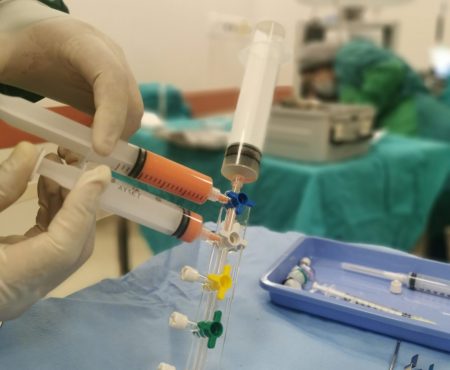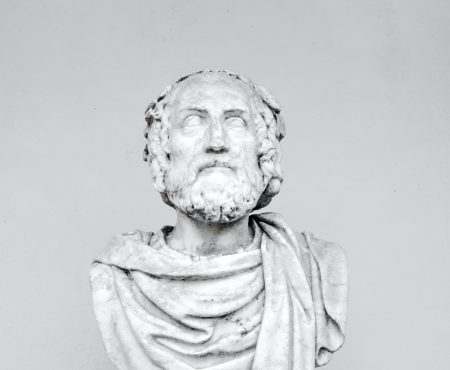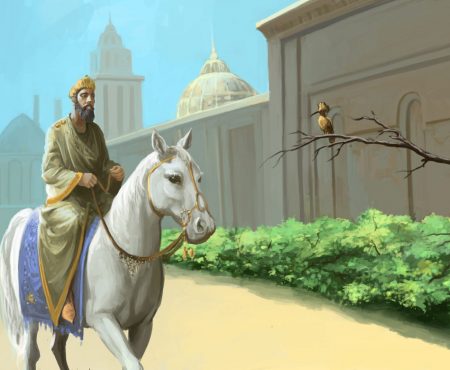Muslim scientists and thinkers have made countless contributions to nearly all branches of the sciences throughout history since the advent of Islam in the 7th century. The faith and its divine message in the holy book of Qur’an, which was revealed to Prophet Mohammad, inspired Muslims to seek knowledge, building on numerous scientific facts never before known to mankind as described in the scripture.
However, although many key inventions leading to modern-day technologies have been pioneered by Muslim scientist, they have widely been attributed to mainly Western inventors without crediting the original studies and innovations generated by their Muslim peers that made the latest advancements possible.
Before there was a spate of modern inventions in the 1800s, innovators from across the Muslim world were making amazing progress and inventing objects and devices that we still use today.
Even Western historians concede that Europe was saved from all the chaos and the backwardness of its Dark Ages by Islamic civilizations which, according to them, brought science, art, culture, ethics and higher education to the continent.
With the unfair portraying of Muslims as radicals and terrorists in today’s media, it is critical to take a step back and realize just how much Muslim civilizations have contributed to the academic advancement and technologies we enjoy today.
From algebra to life-saving surgeries, here’s a brief glance at the remarkable input Muslims have made across the globe with innovations that remain in use in modern days. Here’s a list of some of the great Muslim scientists who have contributed to our world:
1- Musa al-Khwarizmi (780-850 A.D.) who lived in Persia (Iran) and Iraq was one of the greatest Mathematicians of all times. In his monumental book, The Compendious Book on Calculation by Completion and Balancing, he set forth the basic principles of algebraic equations. The name of the book itself contains the word “al-jabr,” meaning “completion,” from which the Latin word algebra is derived. In the book, al-Khwarizmi explains how to use algebraic equations with unknown variables to solve real-world problems such as the calculation of compulsory annual charity payment (zakat) by Muslims as well as inheritance division. A unique aspect of his reasoning for developing algebra was the desire to make calculations mandated by Islamic law easier to complete in a world without calculators or computers.
Al-Khwarizmi ’s books were translated into Latin in Europe in the 1000s and 1100s, where he was known as Algoritmi (the word algorithm is based on his name and his mathematical works). Without his work in developing algebra, modern practical applications of math, such as engineering, would not be possible. His works were used as math textbooks in European universities for hundreds of years following his passing.
2- Ibn-e-Sina: Major works in medical history were contributed to the world by famous Muslim scientists and scholars such as Ibn-e-Sina, Ibn-e-Rushd, al-Razi, and Ibn-e-Nafis. The names of theses great doctors were later Latinized and their works were translated into many European language. Even today, the original works of ibn-e-Sina (Avicenna), who became known as ‘doctor of doctors,’ are being taught in Europe.
Nearly 100 treatises were ascribed to Ibn Sina. Some of them are tracts of a few pages, others are works extending through several volumes. The best-known amongst them, and that to which Ibn Sina owed his European reputation, is his 14-volume The Canon of Medicine, which was a standard medical text in Western Europe for seven centuries. He is, however, rarely remembered in the West today and his fundamental contributions to Medicine and the European reawakening goes largely unrecognized.
3- Ibn-e-Haytham: Without the trailblazing work of this 11th century Muslim scientist who developed the field of optics and described how the first cameras worked, it would be quite difficult to imagine a world without photography. This is while billion-dollar companies such as Instagram and Canon are founded on Ibn-e-Haytham idea of capturing light from a scene, creating an image from it, and reproducing that image.
To regulate scientific advancements, Ibn-e-Haytham, who was working in the imperial city of Cairo in the early 1000s, developed the scientific method. His research partially focused on how the pinhole camera worked. He was the first scientist to realize that when a tiny hole is put onto the side of a lightproof box, rays of light from the outside are projected through that pinhole into the box and onto the back wall of it. He realized that the smaller the pinhole (aperture), the sharper the image quality, giving him the ability to build cameras that were incredibly accurate and sharp when capturing an image.
4- Abbas ibn-e-Firnas: This Muslim astronomer, engineer, musician and poet was the first person to make a real attempt at constructing an aircraft — 1000 years before the Wright brothers. He designed a winged apparatus in the 9th century that resembled a bird, using it to successfully fly in the air for several moments before crashing to the ground and hurting his back. He tried again in 875 A.D. after perfecting a machine of silk and eagles’ feathers and jumped from a mountain at age 70. This time he flew to a significant height and remained aloft for 10 minutes but crashed on landing – concluding, correctly, that it was because he had not given his device a tail so it would stall on landing. His model, however, has reportedly inspired Leonardo Da Vinci with his flying machine designs and inventions.
5- Abu al-Qasim al-Zahrawi: This 10th century Muslim surgeon devised the design of numerous surgical devices that were used as models to manufacture many identical modern instruments used by surgeons of today. His scalpels, bone saws, forceps, fine scissors for eye surgery and many of the 200 instruments he invented are recognized by a modern day surgeons. It was he who discovered that catgut used for internal stitches dissolves away naturally (a discovery he made when his monkey ate his lute strings) and that it can be also used to make medicine capsules. Additionally, al-Zahrawi wrote a medical encyclopedia spanning 30 volumes which included sections on surgery, medicine, orthopedics, ophthalmology, pharmacology, nutrition etc. This book, used as a key reference in Europe for five centuries, was known as At-Tasrif and contained data that al-Zahrawi had accumulated during his 50-year career of training, teaching and practice.






All comments (0)